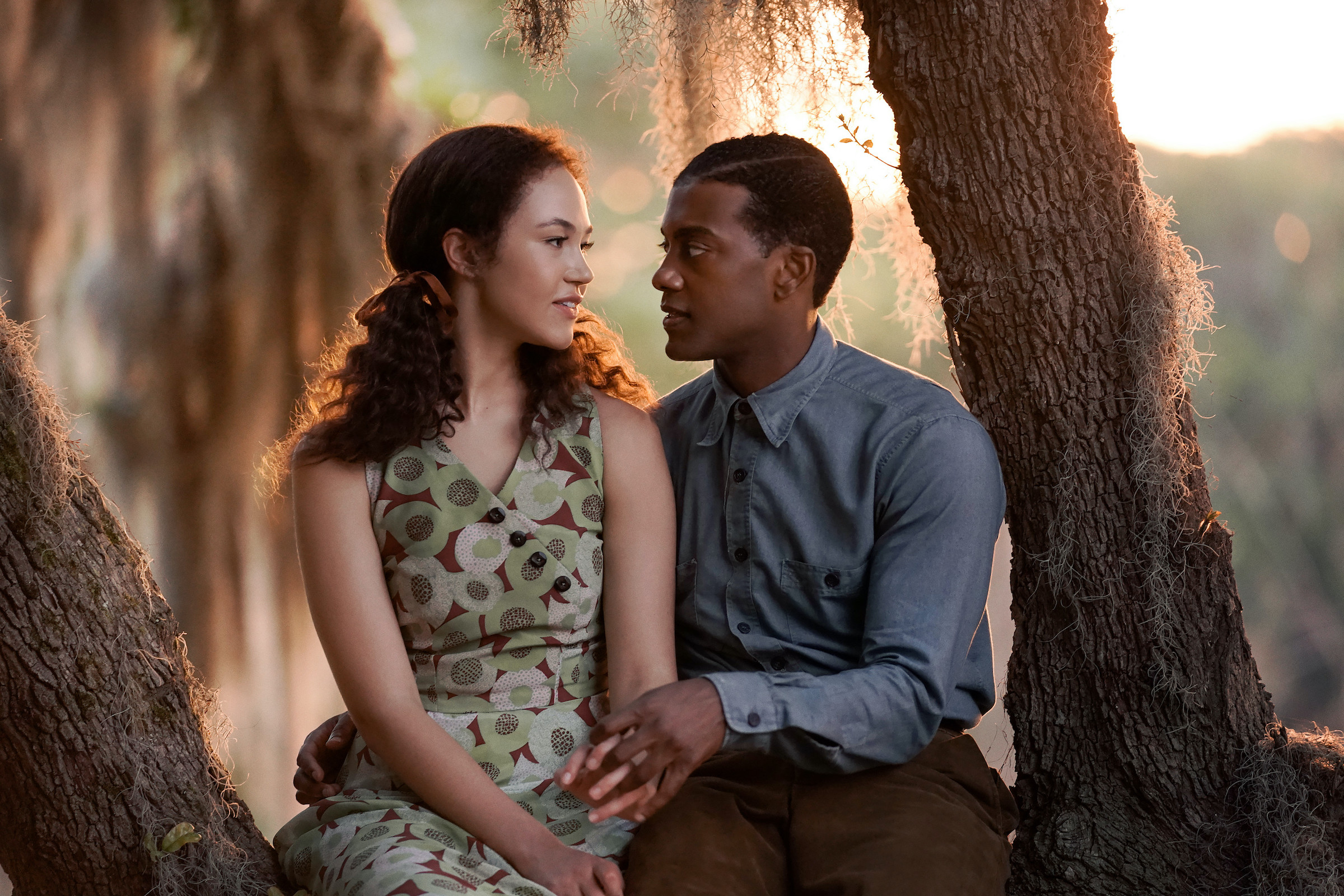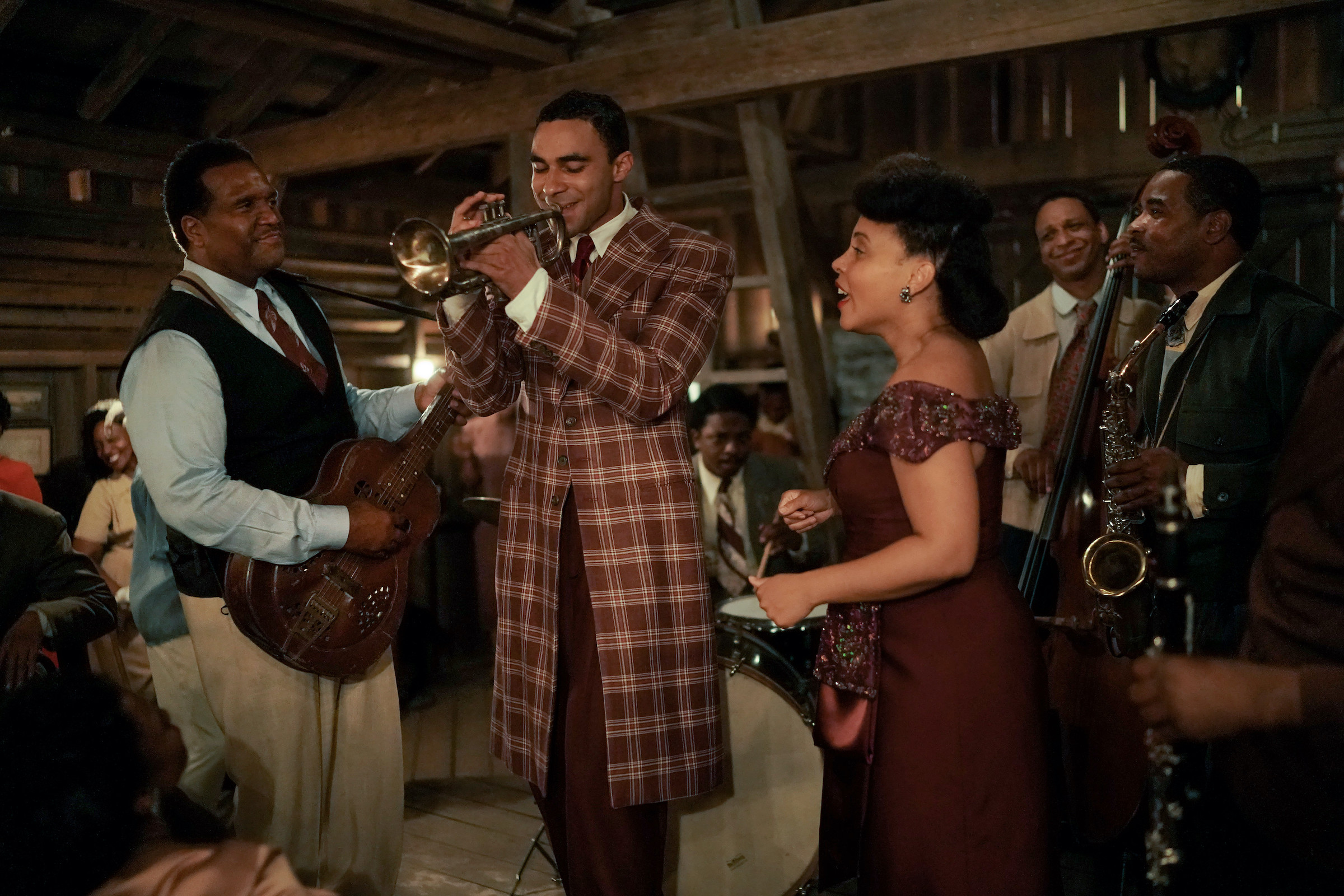
Tyler Perry’s A Jazzman’s Blues has everything, some things in such prodigious quantities that it might be a little too much: forbidden love, drug abuse, hints of incest, a Black woman who’s pushed into passing for white by her scheming mother, complex relationships between women who have every reason to resent each other, and a maternal figure who takes in laundry, helps bring babies into the world and runs a hoppin’ juke joint. You might have to turn the movie off now and then just to catch a breath.
But Perry’s vision is welcome in a world where so few filmmakers will take a chance on making an old-fashioned melodrama, even one that also explores, as this one does, some painful historical underpinnings. A Jazzman’s Blues has a sweep of 50 years: It opens in Hopewell, Georgia, in 1987, and tracks back to the major events in its characters’ lives, focusing largely on a shy young man named Bayou (played by the charming Joshua Boone), a country kid who, circa 1937, falls in love with local beauty Leanne (Solea Pfeiffer), a young woman who’s kept under strict watch by her grandfather. Bayou’s home life is troubled, too. His father, Buster (E. Roger Mitchell), a musician with excessive faith in his own gifts, despises him, preferring his older son, Willie Earl (Austin Scott), who has dutifully learned to play trumpet to please Buster. Bayou has a beautiful singing voice, inherited from his mother, Hattie Mae (Amirah Vann, in a taut, nuanced performance), a hardworking and sensible woman who tries her best to protect Bayou from Buster and Willie Earl’s bullying, risking Buster’s fury and abuse.
Read more: The Best Movies of 2022 So Far

Bayou and Leanne find solace in one another, meeting in secret at night. (She jets a paper airplane through his window as a signal, a romantic motif that finds a nice echo later in the film.) When she learns Bayou can’t read, she teaches him; they make plans to run off together. But circumstances separate them. Flash-forward to 1947: Bayou and Hattie Mae have left their rural home and now live in the town of Hopewell, where Hattie Mae runs a hugely successful nightspot. (She sings there, beautifully, every night, in addition to her regular gigs of midwifery and doing laundry.) A chance reunion between Leanne and Bayou sparks momentary bliss but also danger. Bayou leaves Hopewell for Chicago, where he finds grand success as a singer at a fancy club open to white patrons only. Onstage, he’s backed by an orchestra—one of its members is his own brother, who seethes with resentment—and flanked by gorgeous backup dancers. But it’s Leanne’s love that haunts him, and he’ll do anything to get back to her.
That’s barely even a quarter of what happens in A Jazzman’s Blues. Perry has been hoping to make this film for more than 25 years—a conversation with August Wilson was an early inspiration—and he doesn’t hold back. This is an ambitious, handsome-looking picture that strives to capture the essence of life in the deep South in the mid-20th century in a way that makes movie sense, without excessively romanticizing it. In this world, it’s white people who hold all the cards, and who pose the biggest threat. But Perry also allows us to take pleasure in both the lavishness of the Chicago nightclub and the gutsier, bluesier vibe of Hattie Mae’s juke joint. In Chicago, Bayou serves up a buttery reading of “I Got It Bad (And That Ain’t Good)”; at home in Hopewell, he takes the stage to join Hattie Mae in a rolling version of “Make Me a Pallet on Your Floor.” (The featured songs were arranged and produced by Terence Blanchard.) Perry doesn’t present one venue, or one way of singing, as better than the other; both are outlets for the joy and freedom of self-expression.
Perry may not always have perfect control of the movie’s tone: There’s a moment of jagged, realistic horror that he first alludes to, effectively, and then shows outright, a choice that temporarily rattles the movie. Whether the image is essential or needlessly traumatizing is up to the viewer, but Perry wants to be certain to get our attention, and he does. And there are a few choices that require excessive suspension of disbelief: the older versions of certain characters look nothing at all like the earlier ones. Even so, Perry is generally attuned to what works on-screen and what makes a good story. And sometimes it’s the old-school skills that most need reviving.
More Must-Reads from TIME
- Inside Elon Musk’s War on Washington
- Meet the 2025 Women of the Year
- The Harsh Truth About Disability Inclusion
- Why Do More Young Adults Have Cancer?
- Colman Domingo Leads With Radical Love
- How to Get Better at Doing Things Alone
- Cecily Strong on Goober the Clown
- Column: The Rise of America’s Broligarchy
Contact us at letters@time.com